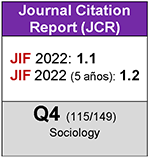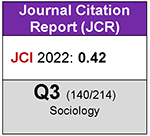Social mobility of Spanish emigrants in Europe
DOI:
https://doi.org/10.5477/cis/reis.129.13Keywords:
Social mobility, Social class, Labor migration, Emigration, Work skills, Europe, Spain, Markov chainsAbstract
Spanish migration in the second half of the twentieth century was initially characterized by its mass and unskilled nature, followed by an interregnum of return processes and finally by a stable migration, not mass but highly skilled. In terms of focus, this emigration of qualified Spaniards was relegated to the background by mass immigration to Spain at the end of the twentieth century. This article considers the relationship between spatial mobility (migration of Spaniards) and its possible impact on the upward social mobility experienced, for which purpose we use data from the international survey EIMSS (European Internal Migrations Social Survey) and Goldthorpe?s occupation-based class mobility procedures. The analysis is complemented by a simulation on class mobility, in order to display and compare the effects of Spaniards? emigration to France, Germany, Italy and Britain on social mobility
Downloads
Downloads
Published
How to Cite
Issue
Section
License
Copyright (c) 2024 Revista Española de Investigaciones Sociológicas

This work is licensed under a Creative Commons Attribution-ShareAlike 4.0 International License.
Permite Compartir — copiar y redistribuir el material en cualquier medio o formato, Adaptar — remezclar, transformar y construir a partir del material para cualquier propósito, incluso comercialmente.








